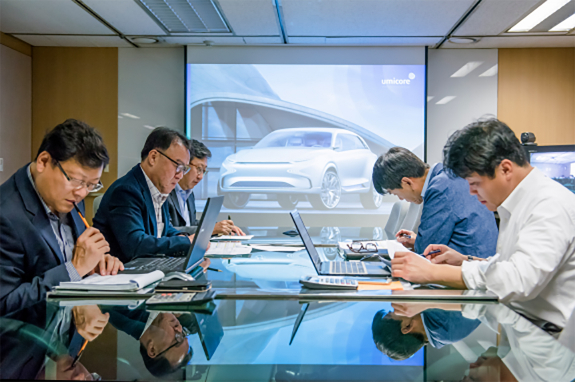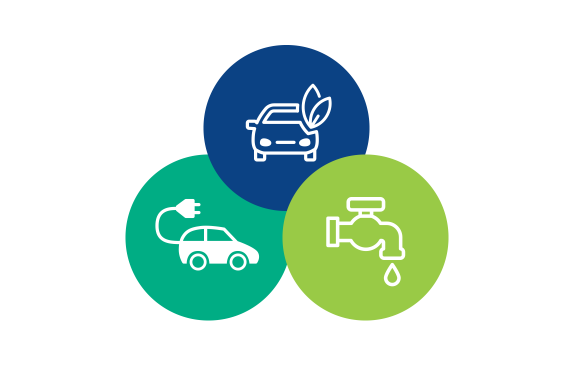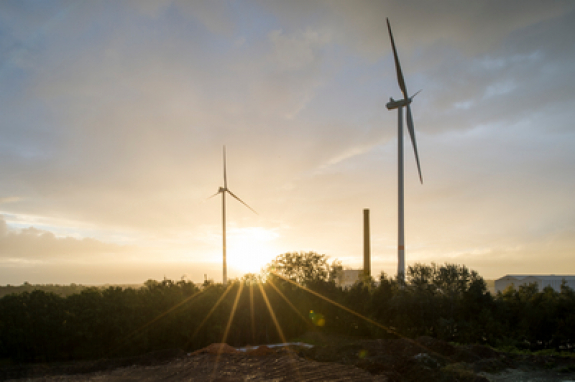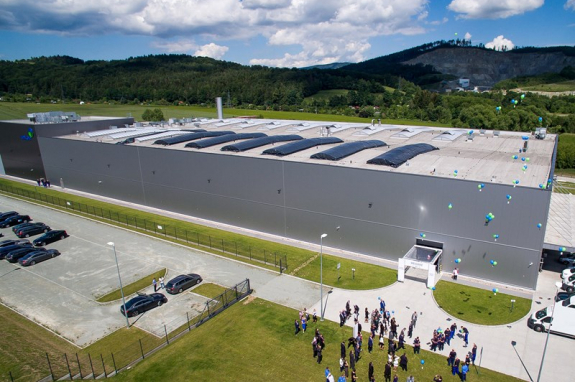
Powering towards a future in electric Vehicles
Battery technology will need to evolve to do more with less: more power density and longer range with less weight and material. Umicore is exploring iterative improvements to NMC technology and the use of high-density composite anodes.
“Electric vehicles powered by green energy through a smart grid is the ideal situation. But before we get there, a lot needs to be done.” - Françoise Chombar CEO Melexis Member of the Board of Directors, Umicore
How will vehicle electrification evolve?
Françoise Chombar, CEO Melexis, Member of the Board of Directors, Umicore
It is clear that the trend to vehicle electrification is unstoppable. Automobile manufacturers are all investing in bringing out new hybrid and battery-operated vehicles or in some cases fuel cells. Choices will depend on the regulatory environment and on the type of mobility consumers will want. However, consumers tend to change their behaviour slowly and education will be as important as regulations in shaping our future.
Regulations and incentives have a heavy influence on the move to electric or hybrid vehicles as does cost of ownership. Many reports state that once costs break even with those of a traditional gasoline or diesel car, the growth of the electric vehicles market will probably be exponential.
Regionally, China is adopting electric vehicles very quickly while the US and Europe are catching up. Umicore is very well positioned in Asia with accelerating production capacity. I witnessed the enormous scale of this investment when I visited Umicore’s South Korean battery materials plant in September 2017. China is betting heavily on pure electric vehicles, while the US might be more likely to opt for range extenders. However, all those car types need batteries, so Umicore is well positioned to benefit, no matter what scenario plays out.
Battery technology will need to evolve to do more with less: more power density and longer range with less weight and material. I’m impressed by the know-how, foresight and engagement of Umicore, divesting some of its activities while increasing its catalysts, battery materials and recycling investments so as to achieve a strategic position to capture market growth in all these segments.
“I believe incrementally improving lithium-ion technology is more reliable than waiting for the next big thing.” - Denis Goffaux Chief Technology Officer, Umicore
Choosing the right technology
Denis Goffaux, Chief Technology Officer, Umicore
Several cathode chemistries are suitable for electric vehicles:
- LFP (lithium-iron-phosphate) has a limited energy density. While mostly unsuitable for electric cars it could be used for vehicles that travel short distances.
- NCA (lithium-nickel-cobalt-aluminium) provides high energy density thanks to its nickel content, but has constraints in terms of cycle life and safety.
NMC (lithium-nickel-cobalt-manganese) is the most versatile cathode material because its performances can be tuned by changing its composition. Umicore and most carmakers believe NMC has the best trade-off between driving range and cost. NMC and NCA belong to the same family of layered compounds, so we are working on improving NMC by altering the amounts of cobalt and manganese it contains and adding more nickel, with the aim of reaching the same level of energy density as NCA.
The automotive industry has a well-structured development process so our iterations need to align with the automakers’ roadmaps. This means development steps are incremental to ensure reliable upscaling and supply chain development. By contrast, disruptive battery technology seems very unlikely to make a big leap to huge improvements, owing to the need for validation with multiple partners, and for developing components and manufacturing techniques. Lithium-ion technology is likely to remain the reference in the near future as incremental improvements, which are themselves quite disruptive, are more reliable than waiting for the next big idea.
Energy storage also depends on the anode, which has long used a technology based on graphite. Despite improvements over time, the basic material has not changed. Umicore is working on replacing graphite with higher energy-density composite silicon-carbon anodes which could potentially more than double anode capacity. After several years of development, we are getting closer to commercial market introduction. Only a few companies are working on this and we are well positioned, with the right technology and well-prepared customers.
Stories
- Formula E
- Gasoline particulate filters
- Energy storage at Umicore’s Olen site
- Umicore travel and fleet policy
- Cultivating young talent
- Stationary Catalysis
- Sustainable battery materials supply chain
- Umicore Capital Market Days in Seoul, Korea
- Umicore Argentina closed the loop for cooling water
- Employee Engagement
- Closing the loop for cobalt in consumer devices’ batteries
- Umicore Hoboken integrates refugees into the workforce
- Introducing the Umicore Awards
- Innovation for a sustainable future
- Bringing the world of sustainable technologies to students
- Growing for clean mobility
- Improving gender diversity in senior management
- Powering towards a future in electric Vehicles
- Smooth integration of Haldor Topsoe’s DeNOx technology
- Environment as a catalyst for improvement
- JUMPing across borders
- Expanding to meet the clean mobility challenge
- Ensuring sustainable cobalt sourcing
- Pushing for progress on safety
- New automotive catalyst plant to enable cleaner air
- Olen: Charging for the Future
- Collaborating on new metal recovery processes







